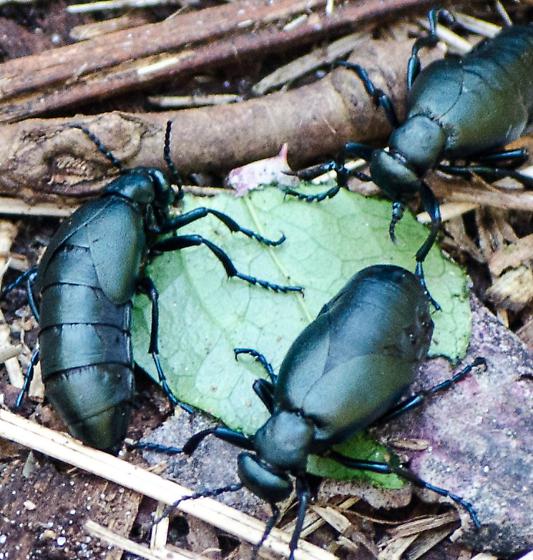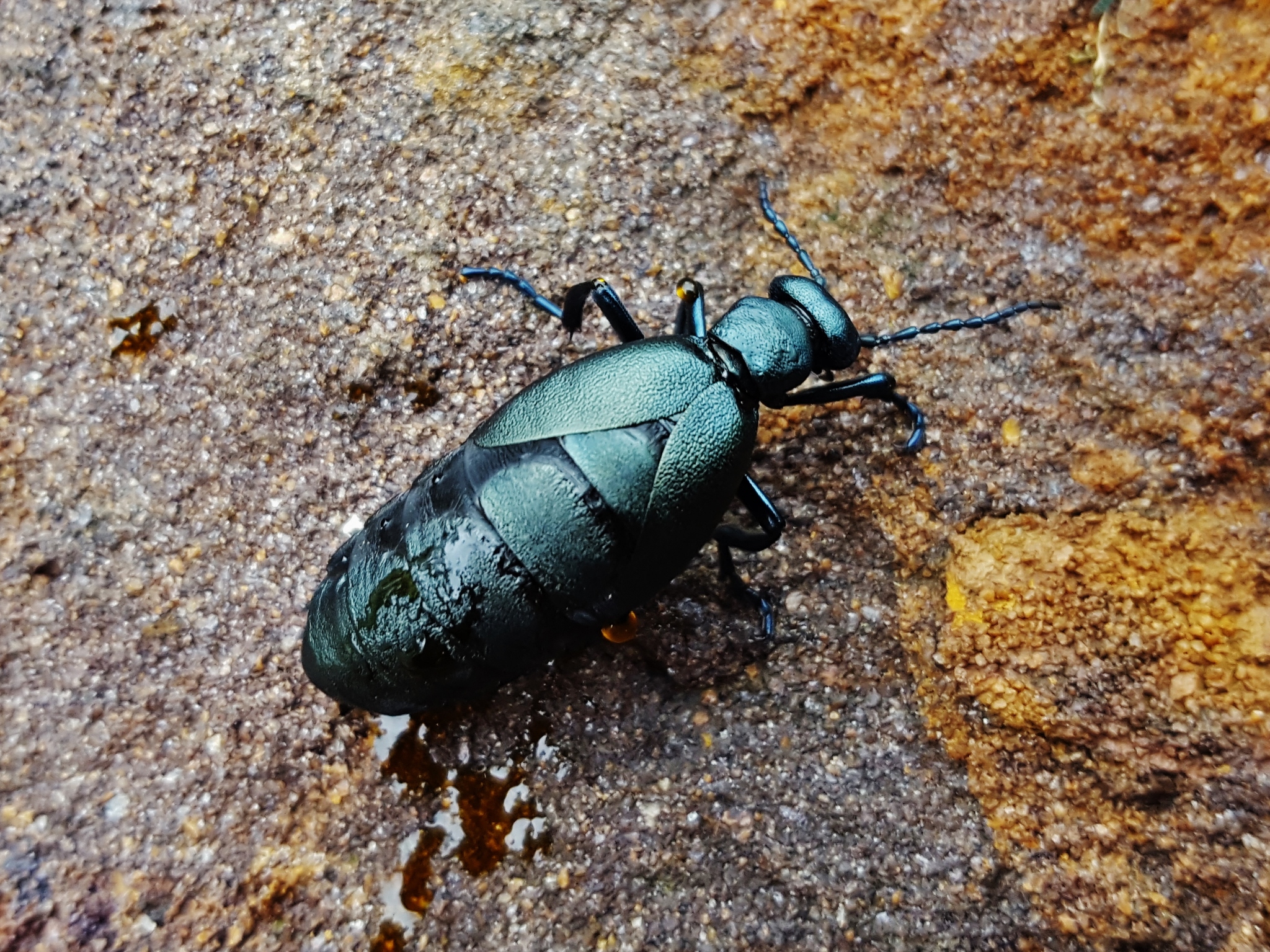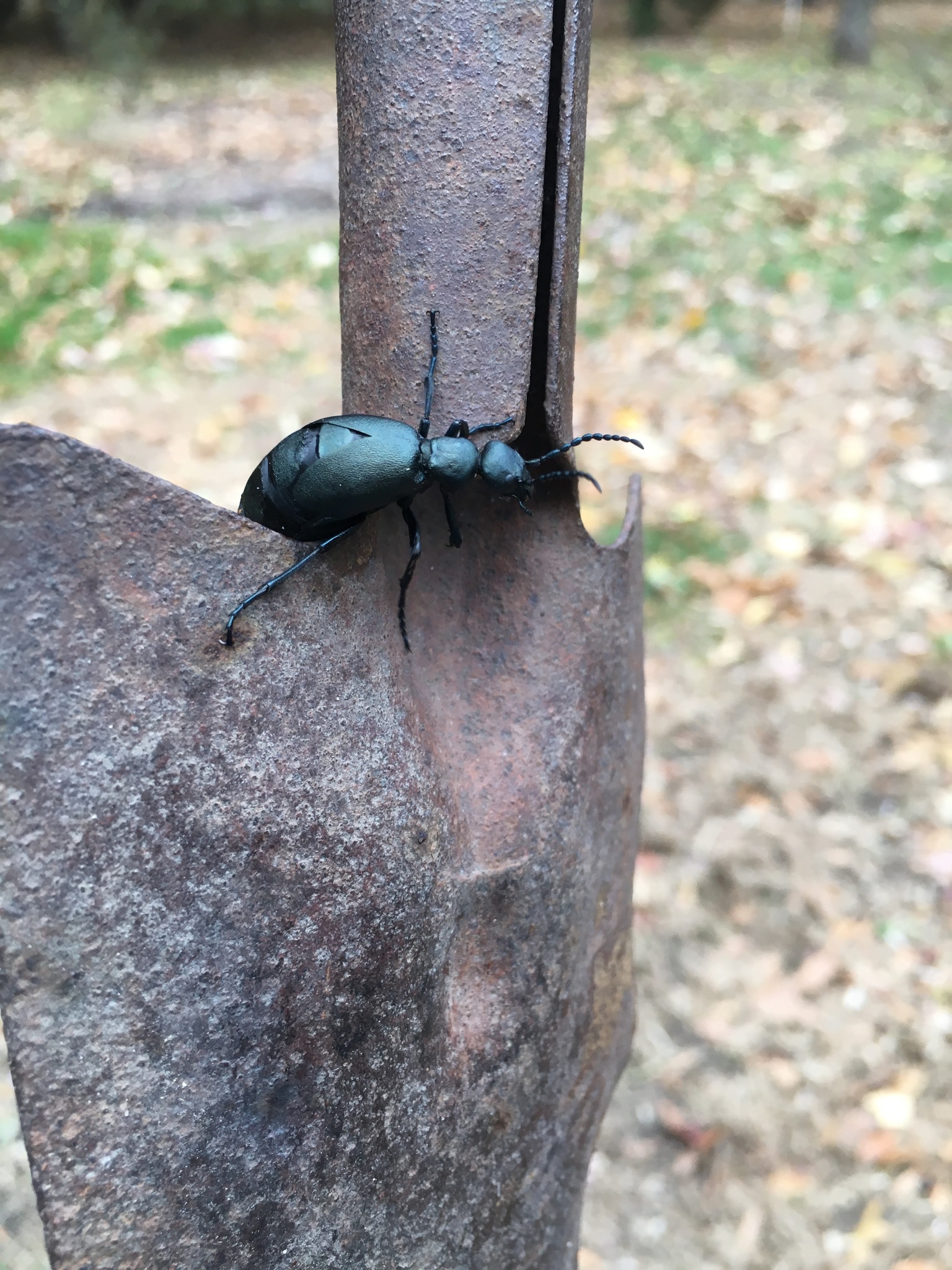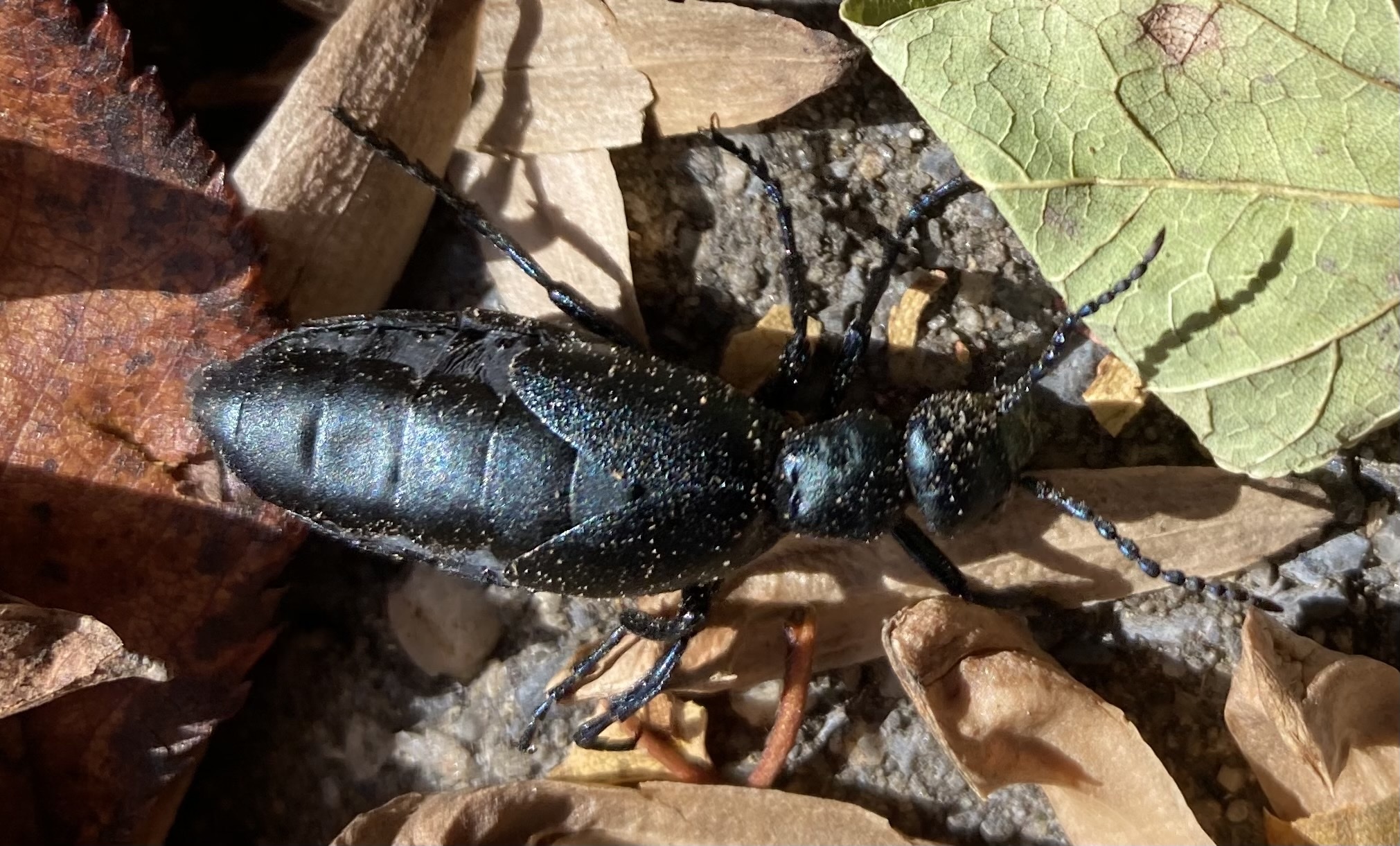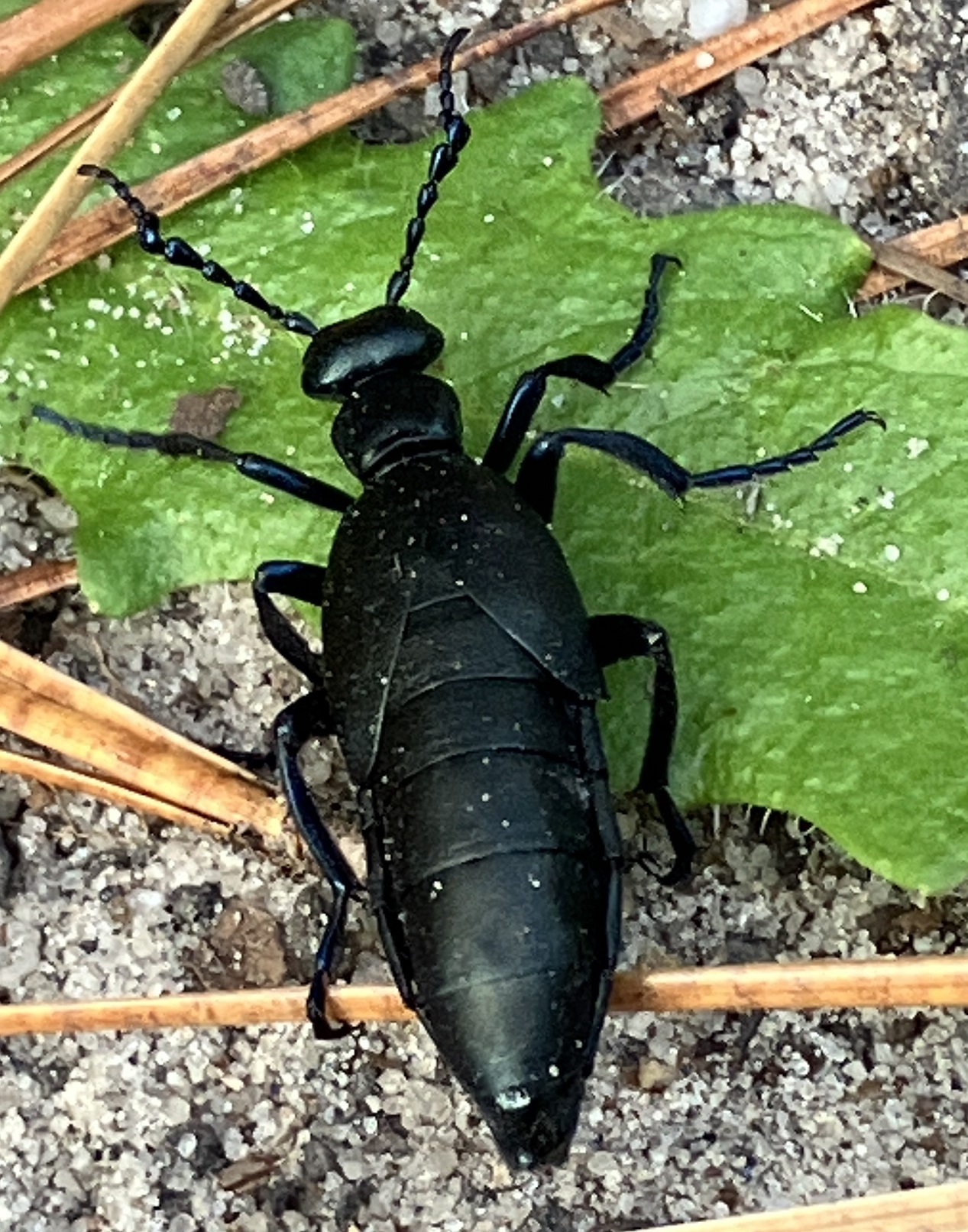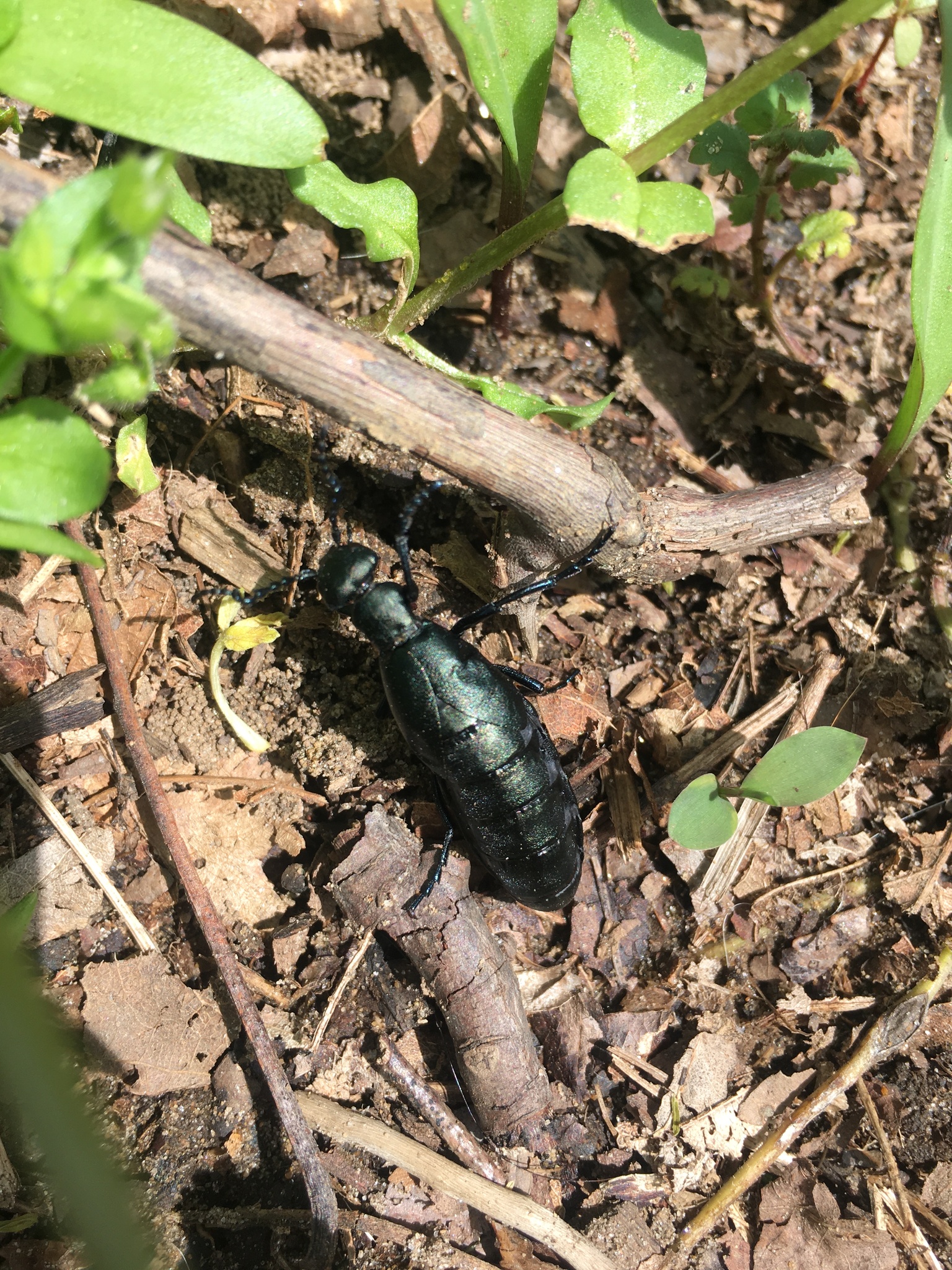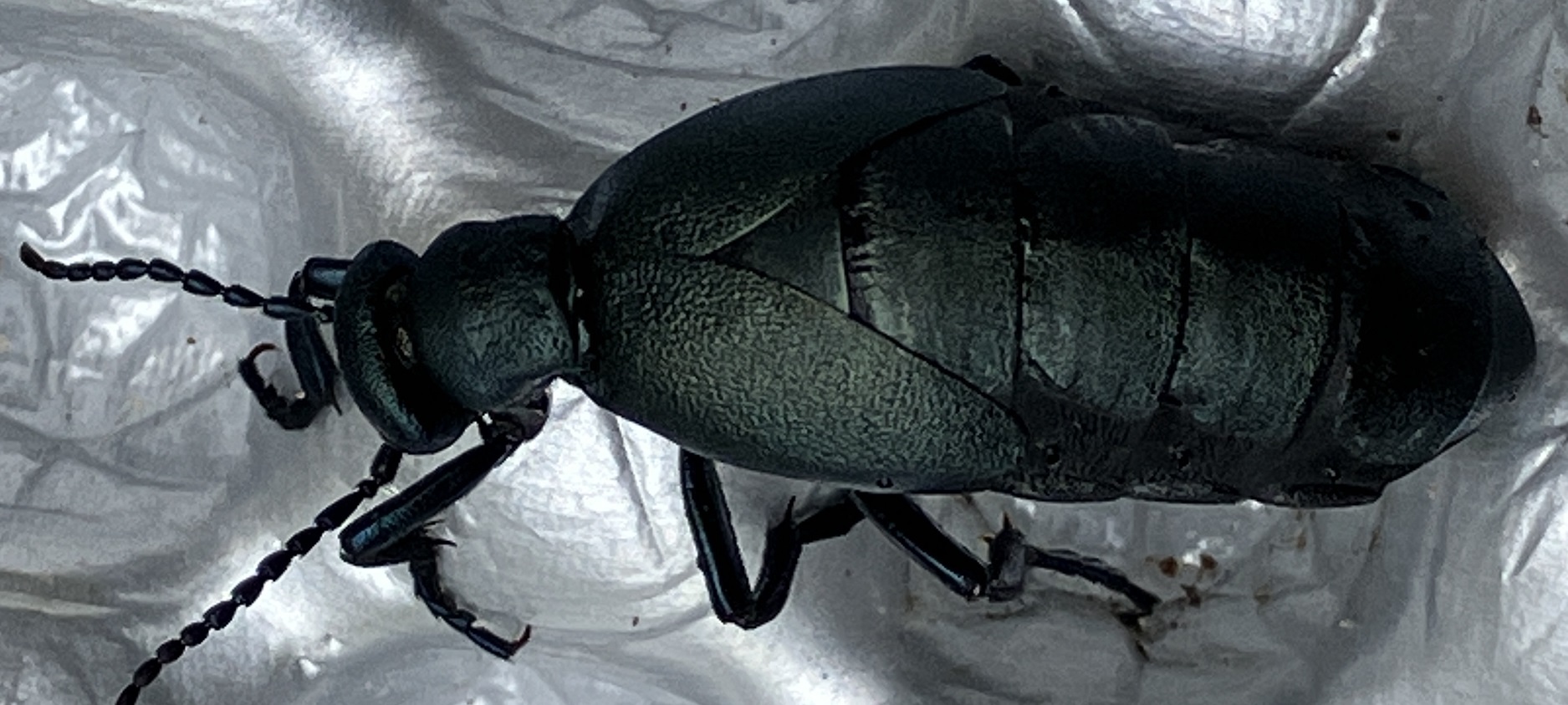Map Snapshot










32 Records
Relationships
"Adults of many genera, notably Pedilus, are attracted to cantharidin (males seek out blister beetles, climb onto them and lick off the cantharidin the blister beetles exude and use the blistering agent to impress a female of their own species who then mates with them, whereupon most of the cantharidin is transfered to the female in the form of a sperm packet. The eggs the female subsequently lays are coated with cantharidin to protect them from being eaten before they hatch. -Jim McClarin, 26.iii.2006)" (BugGuide, 2006).
Seasonality Snapshot
Use of media featured on Maryland Biodiversity Project is only permitted with express permission of the photographer.
Female Meloe campanicollis in Wicomico Co., Maryland (11/2/2013).
Media by
Bill Cecil.
Meloe campanicollis being attended by several Pedilus terminalis in Anne Arundel Co., Maryland (4/29/2007).
Media by
Sara Tangren.
Meloe campanicollis being attended by several Pedilus terminalis in Anne Arundel Co., Maryland (4/29/2007).
Media by
Sara Tangren.
Meloe campanicollis in Wicomico Co., Maryland (11/2/2013).
Media by
Bill Cecil.
Meloe campanicollis in Anne Arundel Co., Maryland (11/9/2017). (c) Matthew Beziat, some rights reserved (CC BY-NC).
View Record Details
Media by
Matthew Beziat.
Meloe campanicollis in Wicomico Co., Maryland (11/27/2019). (c) psulvbiol, some rights reserved (CC BY-NC).
View Record Details
Media by
psulvbiol via iNaturalist.
Meloe campanicollis in Montgomery Co., Maryland (11/10/2020). (c) vicnaz1, some rights reserved (CC BY-NC).
View Record Details
Media by
vicnaz1 via iNaturalist.
Meloe campanicollis in Wicomico Co., Maryland (11/9/2022). (c) Cindi Fitzgerald, some rights reserved (CC BY-NC).
View Record Details
Media by
cin579 via iNaturalist.
Meloe campanicollis in Prince George's Co., Maryland (4/10/2021). (c) hessmuse, some rights reserved (CC BY-NC).
View Record Details
Media by
hessmuse via iNaturalist.
Meloe campanicollis in Wicomico Co., Maryland (10/26/2022). (c) Cindi Fitzgerald, some rights reserved (CC BY-NC).
View Record Details
Media by
cin579 via iNaturalist.
Source: Wikipedia

| Meloe campanicollis | |
|---|---|
| Scientific classification | |
| Domain: | Eukaryota |
| Kingdom: | Animalia |
| Phylum: | Arthropoda |
| Class: | Insecta |
| Order: | Coleoptera |
| Family: | Meloidae |
| Genus: | Meloe |
| Species: | M. campanicollis
|
| Binomial name | |
| Meloe campanicollis Pinto & Selander, 1970
| |
Meloe campanicollis is a species of blister beetle in the family Meloidae. It is found in North America.[1][2][3]
References
[edit]- ^ "Meloe campanicollis Report". Integrated Taxonomic Information System. Retrieved 2019-09-23.
- ^ "Meloe campanicollis". GBIF. Retrieved 2019-09-23.
- ^ "Meloe campanicollis species Information". BugGuide.net. Retrieved 2019-09-23.
Further reading
[edit]- Pinto, John D.; Selander, Richard B. (1970). "The Bionomics of Blister Beetles of the Genus Meloe and a Classification of the New World Species". Illinois Biological Monographs. 42. doi:10.5962/bhl.title.50239. hdl:2142/25170. ISBN 978-0252000812.
- Lobl, I.; Smetana, A., eds. (2013). Catalogue of Palaearctic Coleoptera, Volume 5: Tenebrionoidea. Apollo Books. ISBN 978-90-04-26090-0.
